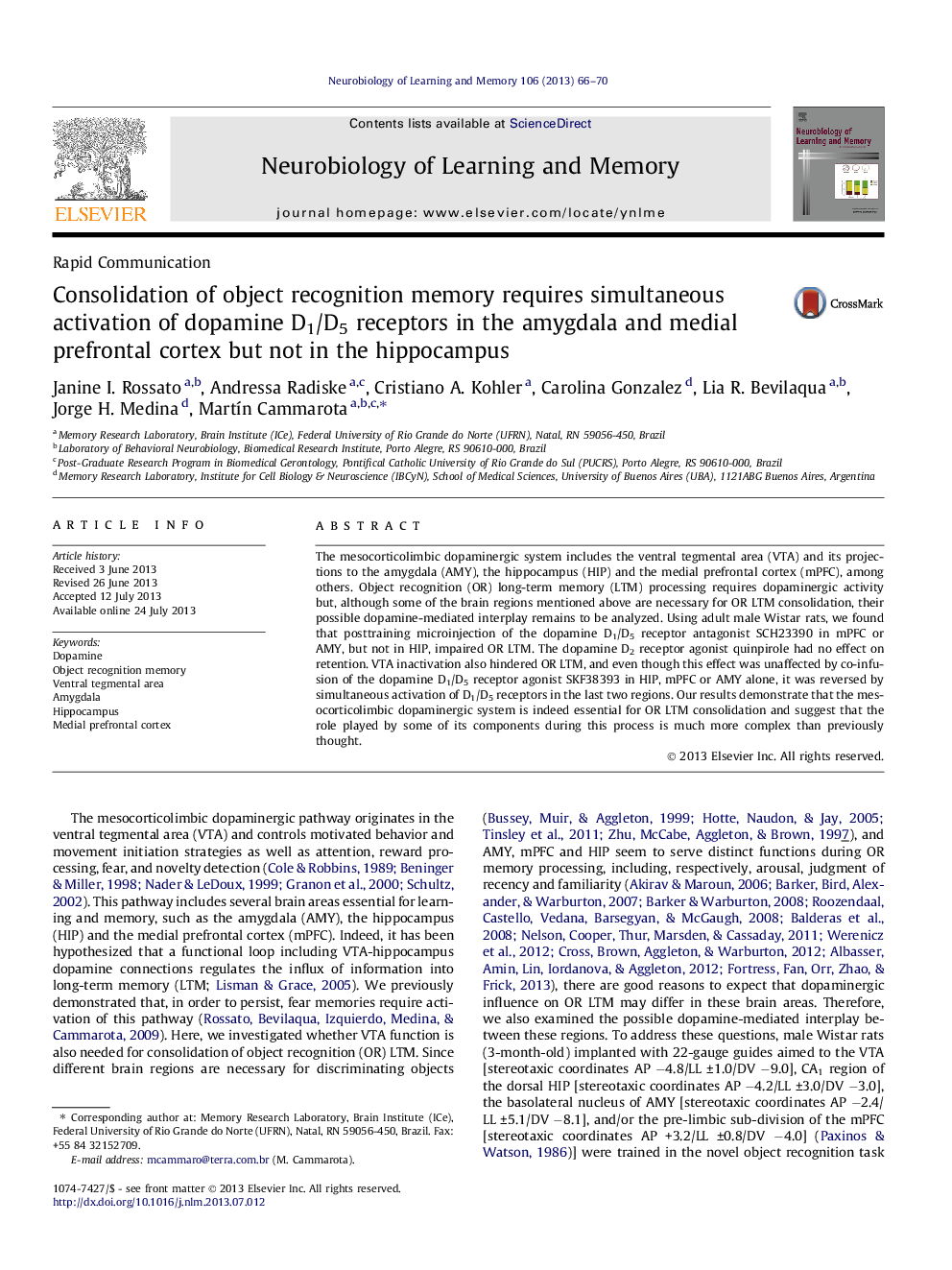| Article ID | Journal | Published Year | Pages | File Type |
|---|---|---|---|---|
| 936617 | Neurobiology of Learning and Memory | 2013 | 5 Pages |
•Dopamine D1/D5 receptor inactivation in mPFC or AMY, but not in HIP, impairs object recognition memory consolidation.•VTA inactivation also hindered recognition memory.•The amnesia caused by VTA inactivation was reversed by the simultaneous activation of D1/D5 receptors in mPFC and AMY.
The mesocorticolimbic dopaminergic system includes the ventral tegmental area (VTA) and its projections to the amygdala (AMY), the hippocampus (HIP) and the medial prefrontal cortex (mPFC), among others. Object recognition (OR) long-term memory (LTM) processing requires dopaminergic activity but, although some of the brain regions mentioned above are necessary for OR LTM consolidation, their possible dopamine-mediated interplay remains to be analyzed. Using adult male Wistar rats, we found that posttraining microinjection of the dopamine D1/D5 receptor antagonist SCH23390 in mPFC or AMY, but not in HIP, impaired OR LTM. The dopamine D2 receptor agonist quinpirole had no effect on retention. VTA inactivation also hindered OR LTM, and even though this effect was unaffected by co-infusion of the dopamine D1/D5 receptor agonist SKF38393 in HIP, mPFC or AMY alone, it was reversed by simultaneous activation of D1/D5 receptors in the last two regions. Our results demonstrate that the mesocorticolimbic dopaminergic system is indeed essential for OR LTM consolidation and suggest that the role played by some of its components during this process is much more complex than previously thought.
